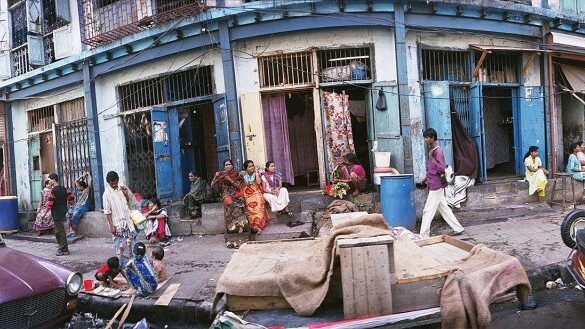Six Nepali Girls Set Free In Kolkata’s Red-Light Area
Sex Trafficking
KOLKATA, INDIA,
January 22, 2015
Six young women trafficked from Nepal into India were set free from multiple brothels in a single night last week. IJM joined an entire police department and three other NGOs on the complex operation in the city’s largest red-light area.
Walk through the crowded streets by watching this video of the city's largest red-light area by day.
A Dangerous Business at the Border
This operation came about because the Nepali government wrote a letter late last year urging Indian authorities to address the epidemic of trafficking. There are about 200,000 Nepali girls and women working in Indian brothels, with up to 7,000 more arriving each year, according to the Family Planning Association of Nepal. Many of these are trafficked, either forcefully kidnapped or tricked by false job or marriage offers.
In the first weeks of this year, Kolkata police mobilized their entire detective force of 52 officers and called IJM and three other NGOs to plan a massive operation for January 14.
The Massive Operation
Police led the force down the city’s convoluted lanes, flanked by ramshackle shops and haggling crowds, to four brothels clustered together. The rescue team split and entered multiple locations simultaneously. Inside each brothel, police and NGO partners went from room to room, searching for underage girls who had been trafficked.
^GALLERY:12^Inside one dingy room piled with garbage, IJM’s Director of Aftercare Pasang Bhutia and police met a Nepali girl who looked quite young. The girl unlocked a small box and showed Bhutia a ration card with the word "Adult” printed across it. There is no such identifier on government-issued ration cards: it was a fake.
All six trafficking victims had similar fake documents—traffickers and brothel owners often issue these kind of documents to underage girls in case police ever show up.
By this point, the main madam who ran the brothel had fled the scene.
A New Chapter Begins
During the operation, some of the girls were nervous and resistant, afraid that they were being arrested. This is another common fear tactic traffickers and brothel owners use to deceive victims.
"Some were putting up a strong self, but you can see in their eyes that they’re scared,” Bhutia said. Her team explained what was happening and assured the girls that they were not in trouble, they were being rescued.
Once they had left the red-light area, the girls began to open up to the IJM team. One girl even asked for ice cream. The girls are now in a short-term aftercare shelter; IJM’s caseworkers and government agencies will continue to work with each of the survivors to find the best long-term care.
This operation was unprecedented in many ways. The sheer number of police who mobilized was massive; the planning to enter multiple sites at once complex; and the short amount of time that it all took astonishing. The entire operation was over in two hours.
"It was amazing to see so many departments working together.” said Dolphy Biswas, IJM Government Relations Coordinator. "Everyone put their best forward for the operation. We’re seeing police take responsibility with initiative and sensitivity.”